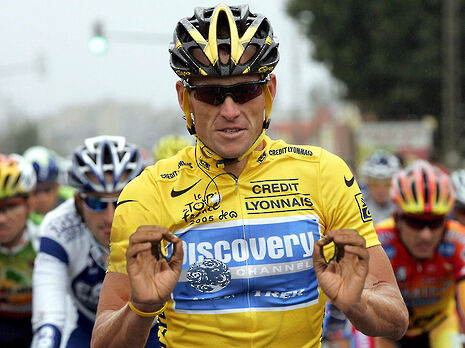Doping for a better future: examining cycling’s remarkable clean-up
Tom Higgins Toon explains how the fall of renowned cheat Lance Armstrong heralded a fairness revolution in the world of cycling

Professional cycling, with its colourful history of blood doping and internal corruption, has faced an uphill battle in recent years to demonstrate its worth to the neutral sports fan. However, the spate of confessions and subsequent openness about doping that followed Lance Armstrong’s dramatic disclosure on live TV suggests that cycling, as an elite sport, may have a chance for redemption.
In recent years, cheating has become increasingly sophisticated as riders turn to blood transfusions and epoetin (EPO) injections to artificially increase oxygen levels in the bloodstream. In a farcical period of 16 years from 1996 to 2010, 70 per cent of those finishing on the Tour de France podium were penalised for doping. Yet cheating is not a recent phenomenon: the winner of the 1904 Tour, Maurice Garin, was subsequently disqualified for taking a train, and it was not uncommon to see riders sneaking a bottle of wine into their packs to numb the pain of the arduous 450km stages.
Even if rules were not specifically broken – and they often were – fair play often played second fiddle to cunning chicanery. Diminutive in stature, the 1947 Tour winner Jean Robic would pick up water bottles ballasted with lead to make up lost time descending hills. Greatly embarrassed, the organisers passed rules stating only liquids could fill bottles. His solution? Fill them with mercury instead. Such chutzpah may have amused the crowds and outraged the authorities, but behind the scenes, riders were gambling with their lives. Roger Rivière fell into a ravine, allegedly too drugged to pull on the brakes, and tragically in 1967, Tom Simpson collapsed on the slopes of Mt Ventoux with three vials of amphetamines in his back pocket with a combination of wine and whisky in his bloodstream.
Clearly, cycling’s governing body (UCI) could no longer let matters slide and began testing riders during races. Slow to begin with, drugs testing became increasingly rigorous, culminating in the breakthrough year of 1977, when five-time Tour winner Eddy Merckx tested positive for Pemoline during La Flèche Wallonne. Amazingly, however, he was let off with just a one-month suspension and a pittance of a fine to his name. And even when technology enabled the UCI to see who was cheating, their ‘punishments’ did little to change the status quo in the drugs department. Indeed, the 1990s saw doping experience a second wind with virtually untraceable EPO injections: Bjarne Riis was victorious in the 1996 Tour de France and remained highly respected until a 2007 book written by his former soigneur revealed his diet of EPO and cortisone.
However, the dramatic fall of Lance Armstrong seems to have paved the way for a clean future, where talent and training surpass the syringe. For Armstrong, disgraced hero par excellence, enjoyed unhealthy power relations with members of cycling’s governing bodies and fostered a toxic culture whereby those who stood against him would find themselves rejected at the roadside. Tyler Hamilton and Floyd Landis, two former team-mates, both claim he boasted about taking EPO during the 2001 Tour de Suisse, crowing that the matter would be “taken care of” by his allies in the UCI. In a gesture as disturbing as it is ironic, Armstrong once ‘donated’ $125,000 to fund drugs-testing equipment. For Landis, this cosy relationship removed all legitimacy from cycling as well as any reason to believe that “the people running the sport really want to fix it”.
Yet by exposing this code of omertà for all to see, Armstrong’s fall led to a spate of confessions that has wiped the slate clean for professional cycling. No sooner had the US Anti-Doping agency banned Armstrong for life and stripped him of his seven Tour wins, 15 other high-profile cyclists confessed, including Jan Ullrich, winner of the 1997 Tour and 1999 Vuelta de España. Once the secret left the peloton, the transformation was rapid: in the following Tour, won by Bradley Wiggins, not a single test returned positive. Notably, today’s races are markedly slower: according to Ross Tucker, sports scientist at the University of Cape Town, the power-to-weight ratio of today's leading riders is around 10 per cent lower than in the EPO era.
In the post-Armstrong era, professional teams have begun to take a more transparent approach towards their preparations. Following the inevitable accusations of doping that Chris Froome had to endure throughout the 2013 Tour, Team Sky sent all their relevant data to the World Anti-Doping Agency, and now, finally, cycling’s authorities seem to have stepped up to the challenge. As part of the new A.D.A.M.S programme, riders are now obliged to register their whereabouts every day of the year, and must notify the UCI immediately if they change their plans. In addition, each rider is issued a ‘biological passport’, where the results from regular blood and urine samples are collated and analysed for abnormal variation. Not only is doping no longer de rigueur, it is getting much harder to outwit the authorities.
Of course, we still hear of riders’ cheating, but cases are thankfully more comical than customary – think of Nibali holding onto a team car in the 2015 Vuelta de España, or Femke Van den Driessche hiding a motor in her frame to ease up the hills. It seems that in the ‘new look’ professional cycling, cheating is no longer systematic. This sets it apart from several other sports in the modern era, whereby a hollow victory seems more valuable than honest competition with fellow professionals. Somehow, the ‘bad boy’ of elite sport may finally have come to heel
 Interviews / You don’t need to peak at Cambridge, says Robin Harding31 December 2025
Interviews / You don’t need to peak at Cambridge, says Robin Harding31 December 2025 News / Cambridge academics stand out in King’s 2026 Honours List2 January 2026
News / Cambridge academics stand out in King’s 2026 Honours List2 January 2026 Comment / What happened to men at Cambridge?31 December 2025
Comment / What happened to men at Cambridge?31 December 2025 News / Unions protest handling of redundancies at Epidemiology Unit30 December 2025
News / Unions protest handling of redundancies at Epidemiology Unit30 December 2025 News / Varsity’s biggest stories of 202531 December 2025
News / Varsity’s biggest stories of 202531 December 2025








